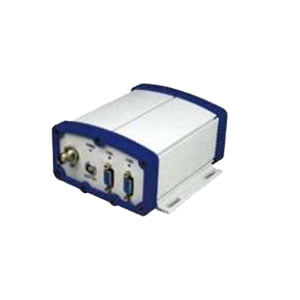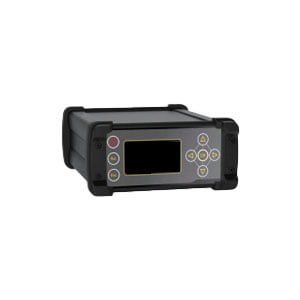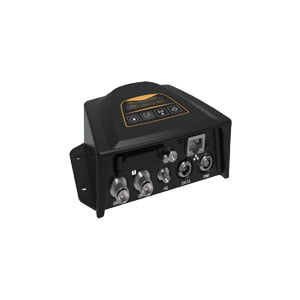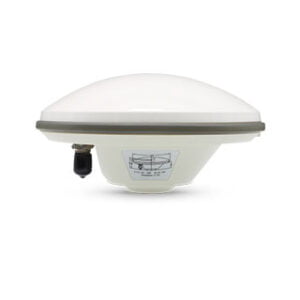In the age of interconnected technologies, GNSS have become indispensable for accurate positioning and navigation. Two essential components of any GNSS system are the GNSS receiver and GNSS antenna. While these components work hand-in-hand to provide seamless navigation solutions, it's crucial to understand their distinct roles. This article aims to shed light on the key differences between GNSS receivers and GNSS antennas, unraveling the intricacies of these fundamental elements.
GNSS Receivers: The Brains Behind Navigation Precision
At the heart of every GNSS system resides the GNSS receiver, a technological marvel that transforms satellite signals into actionable data. The receiver acts as the brains of the operation, processing signals from an array of satellites to determine precise location, velocity, and timing information.
The primary function of a GNSS receiver is to perform trilateration – a process involving the measurement of distances between the receiver and multiple satellites. By analyzing the signals' travel times, the receiver calculates the user's position on Earth. It's important to note that modern GNSS receivers are not confined to a single satellite constellation; they are designed to harness signals from multiple constellations, including GPS, GLONASS, Galileo, and BeiDou. While receiver architectures are customized to align with various GNSS systems and diverse target applications, the fundamental components of a generic GNSS receiver remain illustrated in Figure 1:
- Antenna: The L-band antenna captures GNSS signals along with noise and potential interference.
- Front End: In the typical configuration, the front end is responsible for down-converting, filtering, amplifying, and digitizing the incoming signals.
- Baseband Signal Processing: Multiple signal processing routines come into play for acquiring and tracking the various signals.
- Applications Processing: Tailored to the specific application in mind, the receiver engages in diverse tasks with the acquired GNSS information, delivering meaningful results to the end user.

Beyond basic positioning, GNSS receivers often boast additional features to enhance functionality. Real-time kinematic (RTK) processing, for instance, enables centimeter-level accuracy, making these receivers invaluable in applications like precision agriculture and surveying. Some receivers also integrate inertial sensors, improving performance in situations where satellite signals may be momentarily disrupted, such as tunnels or urban canopies.
GNSS Antennas: Gateway to Satellite Signals
While the receiver that takes center stage, celebrated for its sophisticated processing capabilities, it's the GNSS antenna quietly assumes its pivotal role, facilitating a crucial interface between the receiver and the satellites.
The primary role of the GNSS antenna is to capture signals transmitted by satellites orbiting the Earth. Antennas are engineered to be highly sensitive to these signals, employing advanced designs to maximize reception. This sensitivity ensures that the receiver receives clear and accurate data, paving the way for precise navigation solutions. Acting as both spatial and frequency filters, the antennas refine the incoming signals, eliminating interference and enhancing the quality of the data received. The processed data is then transmitted to GNSS receivers, which convert the signals into actionable location information.
GNSS antennas come in various designs, each tailored to specific applications and environmental conditions. They need to strike a balance between sensitivity and robustness, as they must withstand environmental challenges such as weather variations and temperature extremes. ER-MA-08 GNSS Choke Antenna is a high performance GNSS antenna for base station that covers comprehensive GNSS support: GPS, GLONASS, Galileo, BeiDou as well as L-Band correction service. Tracking in challenging environments, the 2D choke ring antenna with strong multipath suppression performance, is also specifically designed for applications require absolute positioning accuracy and multi-constellation support.
Interplay Between Receiver and Antenna:
While GNSS receivers and antennas have distinct functions, they are intrinsically connected within the navigation ecosystem. The quality of the GNSS antenna profoundly influences the receiver's ability to process satellite signals accurately. This interdependence underscores the importance of selecting compatible and high-quality components to ensure optimal performance.
Moreover, GNSS receivers often incorporate additional components, such as filters and amplifiers, to further enhance signal quality. These integrated elements contribute to the synergy between the receiver and antenna, working together to deliver reliable and accurate navigation information.
To sum up, in the intricate dance of satellite navigation, GNSS receivers and GNSS antennas play indispensable roles, each contributing uniquely to the precision and reliability of the system. The receiver, with its complex signal processing capabilities, transforms satellite signals into actionable data, determining our position with remarkable accuracy. On the other hand, the antenna serves as the essential gateway, capturing signals from the vast expanse of space and delivering them to the receiver for processing.
As we navigate our technologically-driven world, understanding the nuanced roles of these components enriches our appreciation for the seamless and accurate navigation experiences they make possible. In the realm of GNSS technology, the collaborative performance of receivers and antennas ensures that we are not only connected but precisely located in our ever-expanding global landscape.
I will appreciate it if this article helps you. For more information, you may read the articles and products below.
More Technical Questions
1. How to select a GNSS antenna?
2. Some Questions about GNSS Antennas
4. GNSS and High Precision DF Positioning Board
5. Equipment Used in GNSS: Navigating Precision and Accuracy
Products in Article







